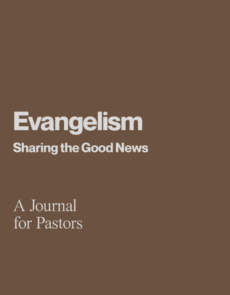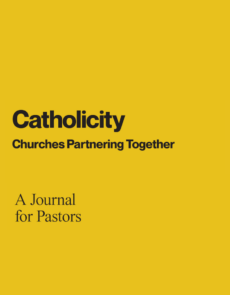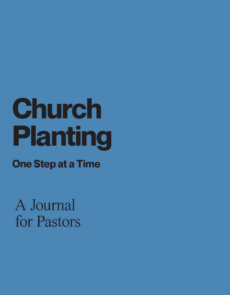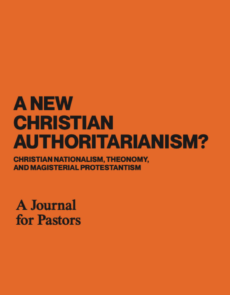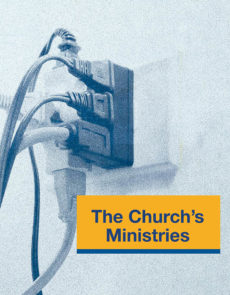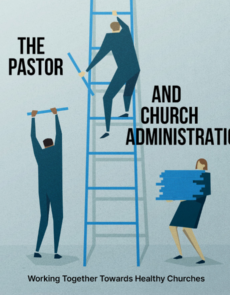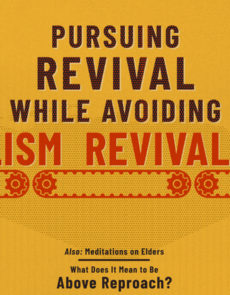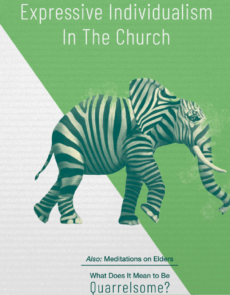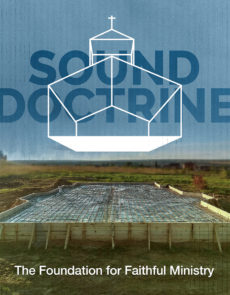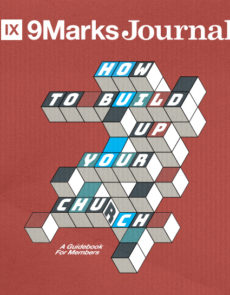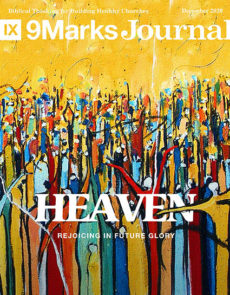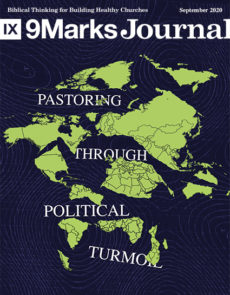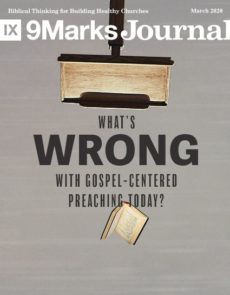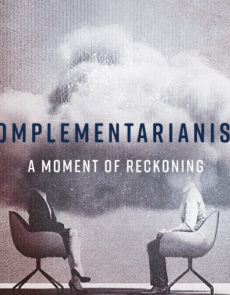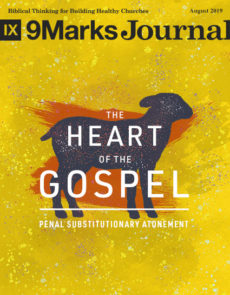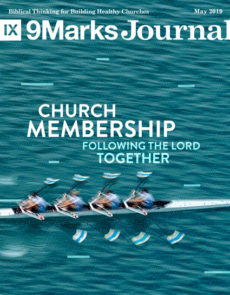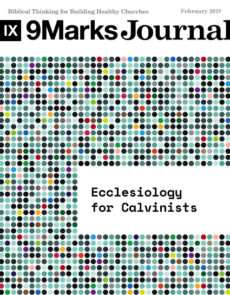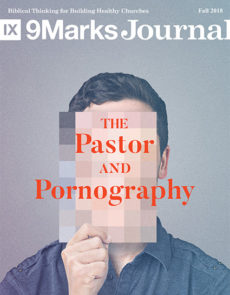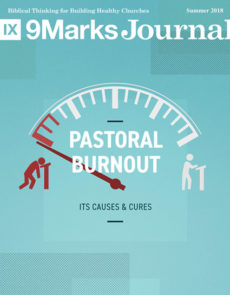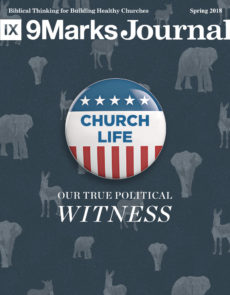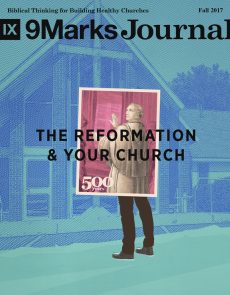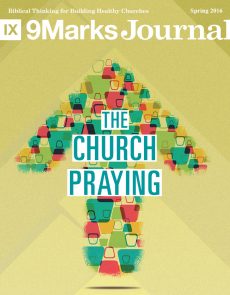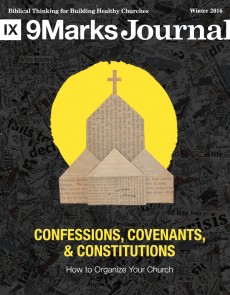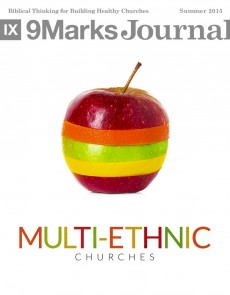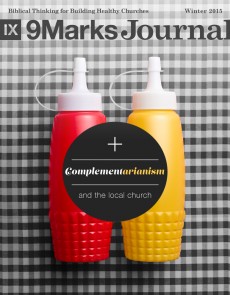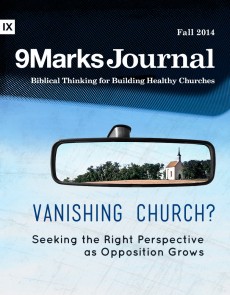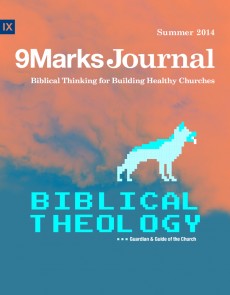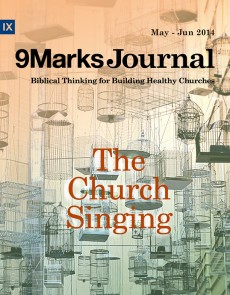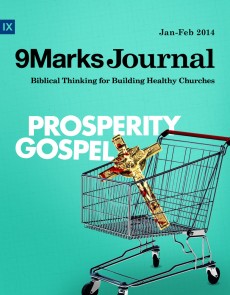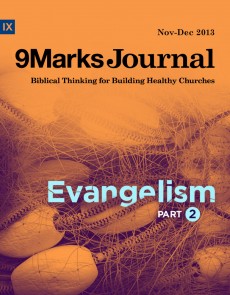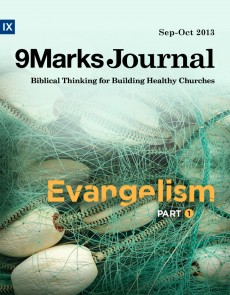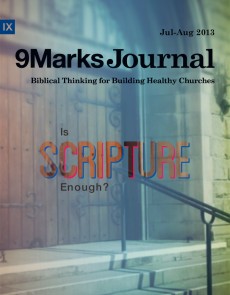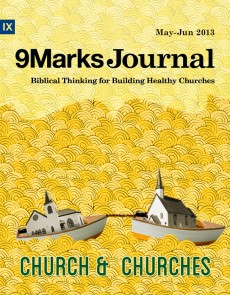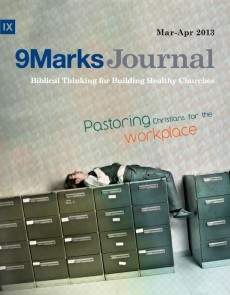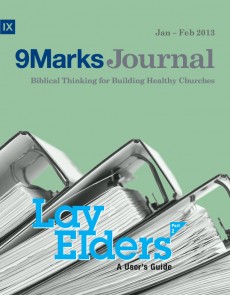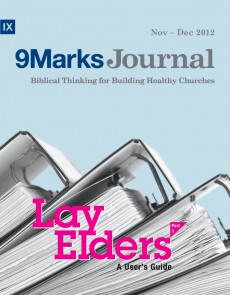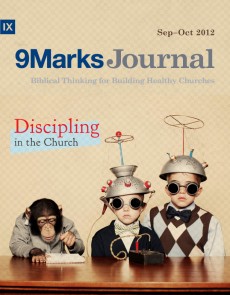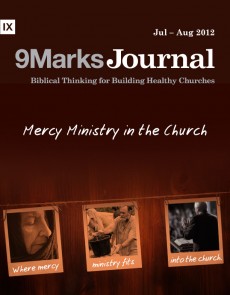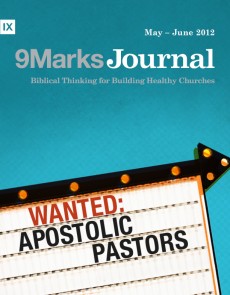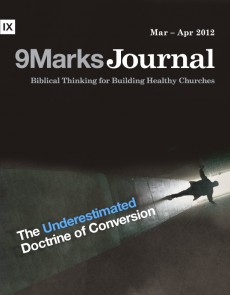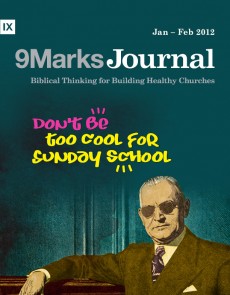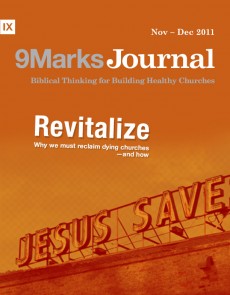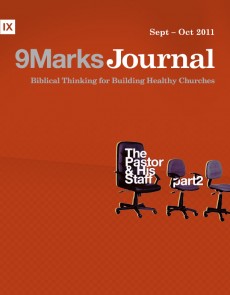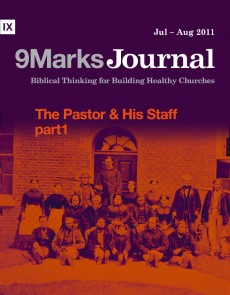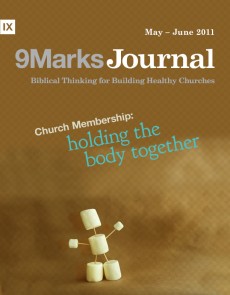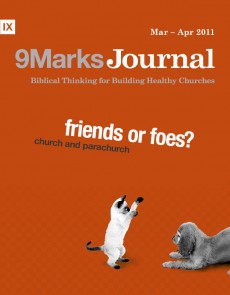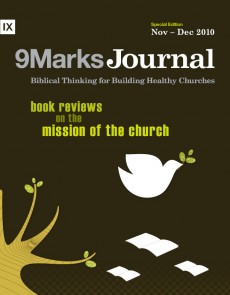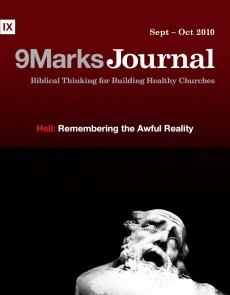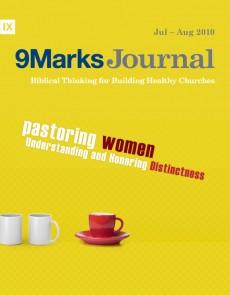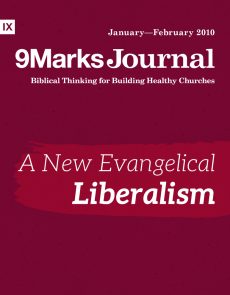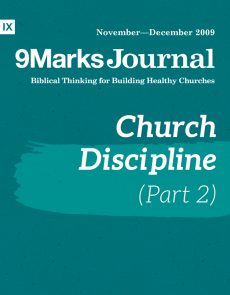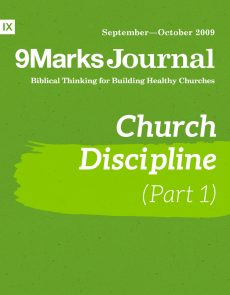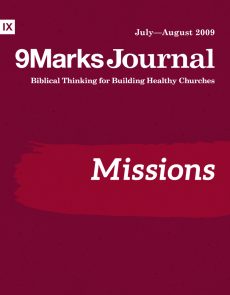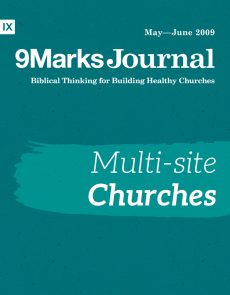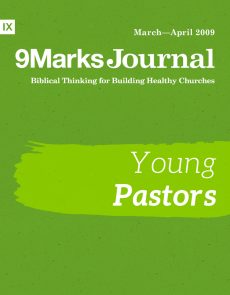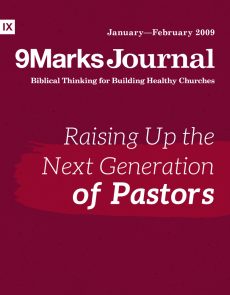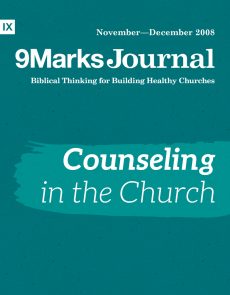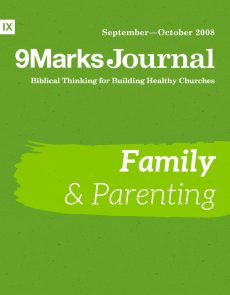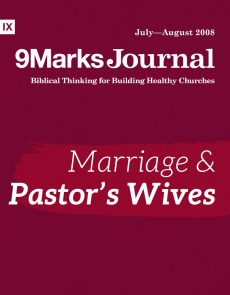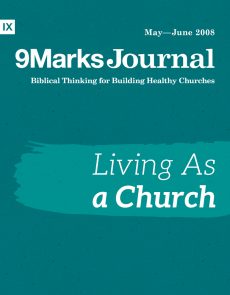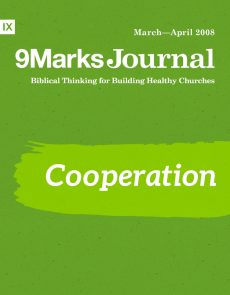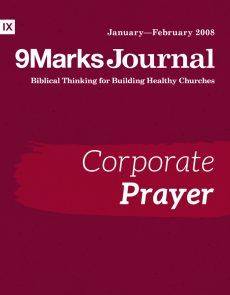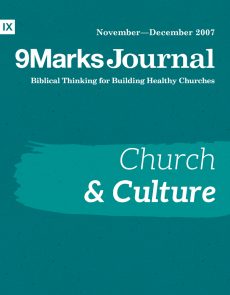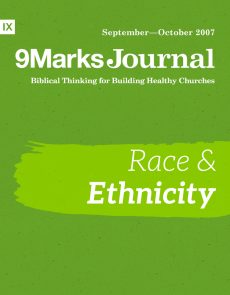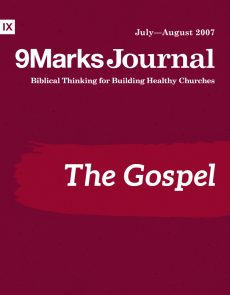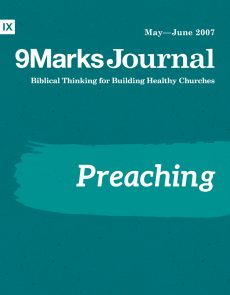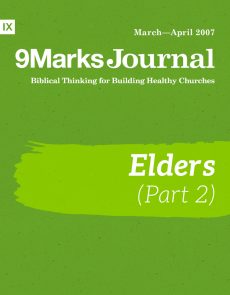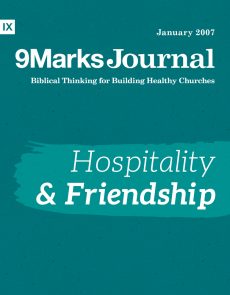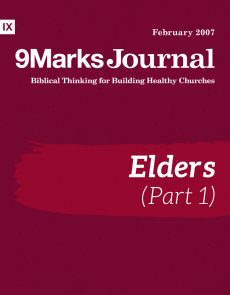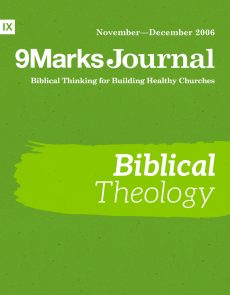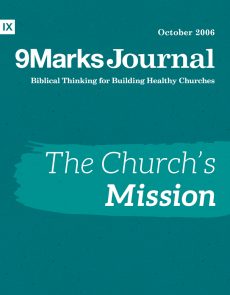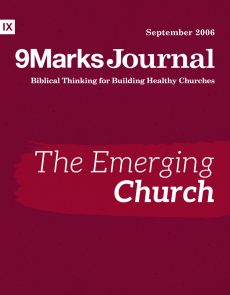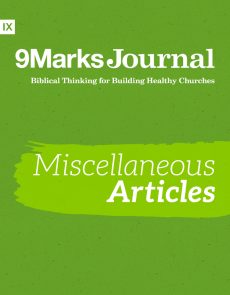Church Membership in the Bible

Church Membership Is an Office and a Job
By Jonathan Leeman | 9Marks Journal: Church Membership: Following the Lord Together | 05.07.2019Church membership is an office, too. It’s a job that comes with authority and responsibility.

Metaphors and Membership: How Biblical Metaphors for the Church Require Church Membership
By Sam Emadi | 9Marks Journal: Church Membership: Following the Lord Together | 05.07.2019If you’re looking for the words “thou shalt be a church member” in Scripture, you won’t find them. But if that troubles you, let me encourage you to think a little differently about how to arrive at biblical conclusions.

Two Prooftexts for Church Membership
By Sam Emadi | 9Marks Journal: Church Membership: Following the Lord Together | 05.07.2019As a professor of mine used to say, “there’s nothing wrong with a prooftext… as long as the text proves what you say it does.”

What are the Responsibilities of Church Membership?
By Matt Emadi | 9Marks Journal: Church Membership: Following the Lord Together | 05.07.2019Sadly, individualism, consumerism, easy-believism, and unbiblical church polities have left many church members intentionally or unintentionally sidelined.

Meaningful Membership & Shepherding the Saints
By Jason Seville | 9Marks Journal: Church Membership: Following the Lord Together | 05.07.2019Church membership isn’t just a useful tool in the pastoral tool belt; it’s the tool belt itself.
Membership around the World

Why Russian Churches Need Membership
By Evgeny Bakhmutsky | 9Marks Journal: Church Membership: Following the Lord Together | 05.07.2019If we want to see the gospel advance in Russia, then our churches must return to meaningful and biblical church membership—embracing the heritage left to us by Scripture and faithful Russian churches in previous generations.

Why Swedish Churches Need Membership
By Johnny Lithell | 9Marks Journal: Church Membership: Following the Lord Together | 05.07.2019I’ve often been asked, in a setting like Sweden, whether church membership is even wise. Won’t it simply turn people away?

Why East Asian Churches Need Membership
By Chariot Lu | 9Marks Journal: Church Membership: Following the Lord Together | 05.07.2019We should exercise biblical membership to correct my people’s growing misunderstanding of love, authority, and commitment.

Why Middle Eastern Churches Need Membership
By Anand Samuel | 9Marks Journal: Church Membership: Following the Lord Together | 05.07.2019Jesus Christ is committed to his church and publicly identifies with her. So should Christians in the Middle East—and every other part of the world.

Why African Churches Need Membership
By Chopo Mwanza | 9Marks Journal: Church Membership: Following the Lord Together | 05.07.2019Churches in Africa needs to teach and practice biblical church membership because it helps address the false sense of community, nominal Christianity, and the subtle relativism.

Why Australian Churches Need Membership
By Lyle Wetherston | 9Marks Journal: Church Membership: Following the Lord Together | 05.07.2019If church membership runs against the grain of our natural and national inclinations, then we need to be wise as to how we promote it.

Church Membership in an International Church: Challenging Case Studies
By Caleb Greggsen | 9Marks Journal: Church Membership: Following the Lord Together | 05.07.2019The normal life for a Christian—even one outside their home country—is committed to a particular group of fellow brothers and sisters

Meaningful Membership in a Small, Rural Area
By Josh Myrick | 9Marks Journal: Church Membership: Following the Lord Together | 05.07.2019Pastors in rural areas must take into account certain challenges while leading Christ’s bride to experience the joy of meaningful membership.

Meaningful Membership in a Mega-Church
By Mark Vroegop | 9Marks Journal: Church Membership: Following the Lord Together | 05.07.2019Size shouldn’t be an excuse for neglecting membership.

How to Talk about Membership on the West Coast
By Kyle Schwahn | 9Marks Journal: Church Membership: Following the Lord Together | 05.07.2019How should we talk about membership on the West Coast? Let me offer three ways that have proven helpful within our body over the past few years.
Membership Best Practices

Once Abused by the Church, Now I Love the Church
By Patti Withers | 9Marks Journal: Church Membership: Following the Lord Together | 05.07.2019But Christ intends the local church to be a comfort and grace to all believers— even those who, like me, have been victims of church abuse.

How Church Membership is Misunderstood, Misapplied, and Abused
By Juan Sanchez | 9Marks Journal: Church Membership: Following the Lord Together | 05.07.2019Pastors committed to the importance of church membership need to be cautious. In our righteous zeal to address deficient views of the church, we may be tempted to an unrighteous zeal.

Should I Join a Church for its Small Groups?
By Andy Johnson | 9Marks Journal: Church Membership: Following the Lord Together | 05.07.2019Keeping small groups from becoming mini-churches often takes intentionality and pastoral effort.

How Long Should A Membership Process Take?
By Allen Duty | 9Marks Journal: Church Membership: Following the Lord Together | 05.07.2019Your membership process—whether shorter or longer—is a tool for discipleship, usually one of the first ones people come in contact with.

How to Conduct a Membership Interview
By PJ Tibayan | 9Marks Journal: Church Membership: Following the Lord Together | 05.07.2019The two-pronged goal of an interview is to (1) disciple the person, and (2) discern whether their profession of faith in Jesus is credible. You want to disciple and discern.

Considering 7 Membership Exceptions
By Bobby Jamieson | 9Marks Journal: Church Membership: Following the Lord Together | 05.07.2019So what do you do about people who either are members or want to join, and are willing to attend regularly, but are not able?

Without Exception: How to Handle Exceptions to the Statement of Faith
By Michael Lawrence | 9Marks Journal: Church Membership: Following the Lord Together | 05.07.2019What do we do when someone takes exception to our church’s statement of faith?

Stories of Restoration after Church Discipline
By J. Kurz, J. Folmar, P. Newton | 9Marks Journal: Church Membership: Following the Lord Together | 05.07.2019We asked three pastors to share a story of restoration—that is, someone who had been restored to membership after being disciplined for unrepentant sin.

Youth and Church Membership—Or, Stop Baptizing Children into the Ether
By Alex Duke | 9Marks Journal: Church Membership: Following the Lord Together | 05.07.2019A church should not baptize young people apart from church membership. To do so is unbiblical, unhelpful, and unloving.

Episode 87: On Church Membership
By J. Leeman, M. Dever | 9Marks Journal: Church Membership: Following the Lord Together | 05.14.2019In this episode of Pastors’ Talk, Jonathan chats with Mark about our new Journal—Church Membership: Following the Lord Together.

Free Download
PDF, ePub, and Kindle files will be sent to this email address. As part of our community, you will receive content & communication from 9Marks. You may unsubscribe at any time.
Support 9Marks
Our work is possible by the generosity of our readers. Give Today










